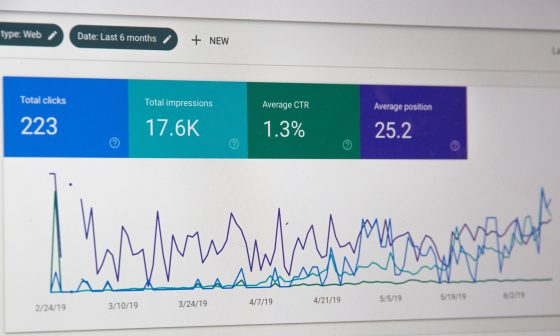
As businesses begin opening up, studies by the World Economic Forum state that over 65% of employees do not wish to return to the office to work, preferring remote working arrangements. Over 58% state that they would quit if forced to return to the office.
As businesses adapt to remote work, they face three main challenges:
- Ensuring consistent productivity from remote workers to meet business goals
- Maintaining accountability and transparency with a distributed workforce
- Boosting employee morale
Converting marketing goals to contests can help businesses motivate employees better and gamifying routine marketing activities with specific goals or targets can ensure productivity levels are consistently high irrespective of where employees are. Properly adopting such strategies can especially enable marketing teams such as local, brand or digital marketing to attain tremendous gains from remote work while still continuing to push business goals.
Contests increase employee engagement with business goals
“Increase the brand’s online reputation”
“Increase customer engagement on digital profiles”
Strategic business goals like these will directly impact your footfall, revenue, and brand perception. But for employees dealing with day-to-day tactical challenges, it is easy to get distanced from these goals (especially in a remote setting) and focus on busywork rather than impactful work.
To ensure worker engagement and team alignment to these goals, you can break down these strategic goals into tactical ones with clear metrics to actively monitor employee contribution and impact.
For example, employees can be given a direct tactical goal of
- “Increase number of reviews responded to on Google Profiles in a week” or
- “Acquire feedback from customers via a survey” which can heavily influence your brand’s online reputation.
These goals clearly highlight what your employees need to do, enabling them to focus their efforts better and visualize the impact of their contributions more easily while still tying in to your larger goal of “Increase the brand’s online reputation”.
Leaderboards improve transparency across remote teams
Managers overseeing a distributed workforce need visibility into their team’s productivity levels without micromanaging their day-to-day activities. Gamifying goals and having a public leaderboard increases transparency into any team’s activities, ensures better accountability, and enables employees to be rewarded in a fair and transparent manner. Any leaderboard that is used to gamify business goals and track contests will help managers monitor two things:
- Actions that are undertaken by the employees and
- Outcomes of their actions
So if you have a contest running, say, “Increase the number of reviews responded to on Google Profiles in a week”, the leaderboard will monitor
- Action: Number of reviews each employee has responded to
- Outcome: Average rating for your locations
This will enable you to easily oversee how your actual business goal “Improve the brand’s online reputation” is influenced by your team’s actions while having clear visibility into how much each employee has contributed towards your goals.
Gamification encourages employees and drives them to success
With employees working remotely in silos, it is easy for teams to become detached from the effects of their work. Without active feedback and encouragement, productivity can drop slowing your business growth considerably.
By making it easy for employees to relate to business goals via Contests, and publishing their achievements openly on leaderboards, managers can motivate employees into driving themselves further and achieving more in the pursuit of concrete, visible goals. Leaderboards can seamlessly track
- How much every employee has contributed to specific business metrics
- The number of metrics any employee has influenced
- The final impact of employee contributions to the actual business goal
This removes any number-crunching that managers have to manually do in terms of tracking performance. Instead, it enables admins to recognize high performers quickly and provide rewards faster boosting team morale.
Gamifying your business, converting your business goals into contests, and maintaining a public leaderboard ensures your employees get to visualize the impact of their efforts on the business and also get publicly recognized.
Three steps to gamify your business
Now that you understand the various parts of gamification and how it can influence your business, here are the steps to adopt it across your teams:
Step 1: Identify the goals you wish to gamify
To obtain the best possible results of gamification, identify the business goals you wish to influence. For every one of these goals, you will need to ensure you have a clear metric that you intend to improve or drive as part of your gamification efforts. This is the number you and your employees will keep an eye on to measure the results of their efforts.
For example, your average review rating, or your review response time.
Step 2: Create Contests associated with the metric you wish to drive
Create contests for your employees where you specify the action you wish for them to undertake and declare the goals from step 1. These contests will help your employees focus better on the goals at hand and engage in activities that explicitly impact the metrics being tracked as part of the contest.
For example, a contest to “Increase the average rating across Google profiles” or “Decrease the review response time”
Step 3: Publish your leaderboard and reward your employees
Creating a leaderboard and making it available for public view is the only way to ensure transparency and instill confidence in employees about the fairness of your contests as well as motivate them to reach the top. Leaderboards will highlight contributions from high performers while also motivating your underperforming employees to achieve more so as to reach the top levels.
Rewarding high performing employees publicly for their efforts — be it a gift card, a voucher, or something larger such as an extra day off — will not only keep morale high among your top performers but also motivate the rest to compete for the top spot next time ensuring a greater increase in productivity all around.


